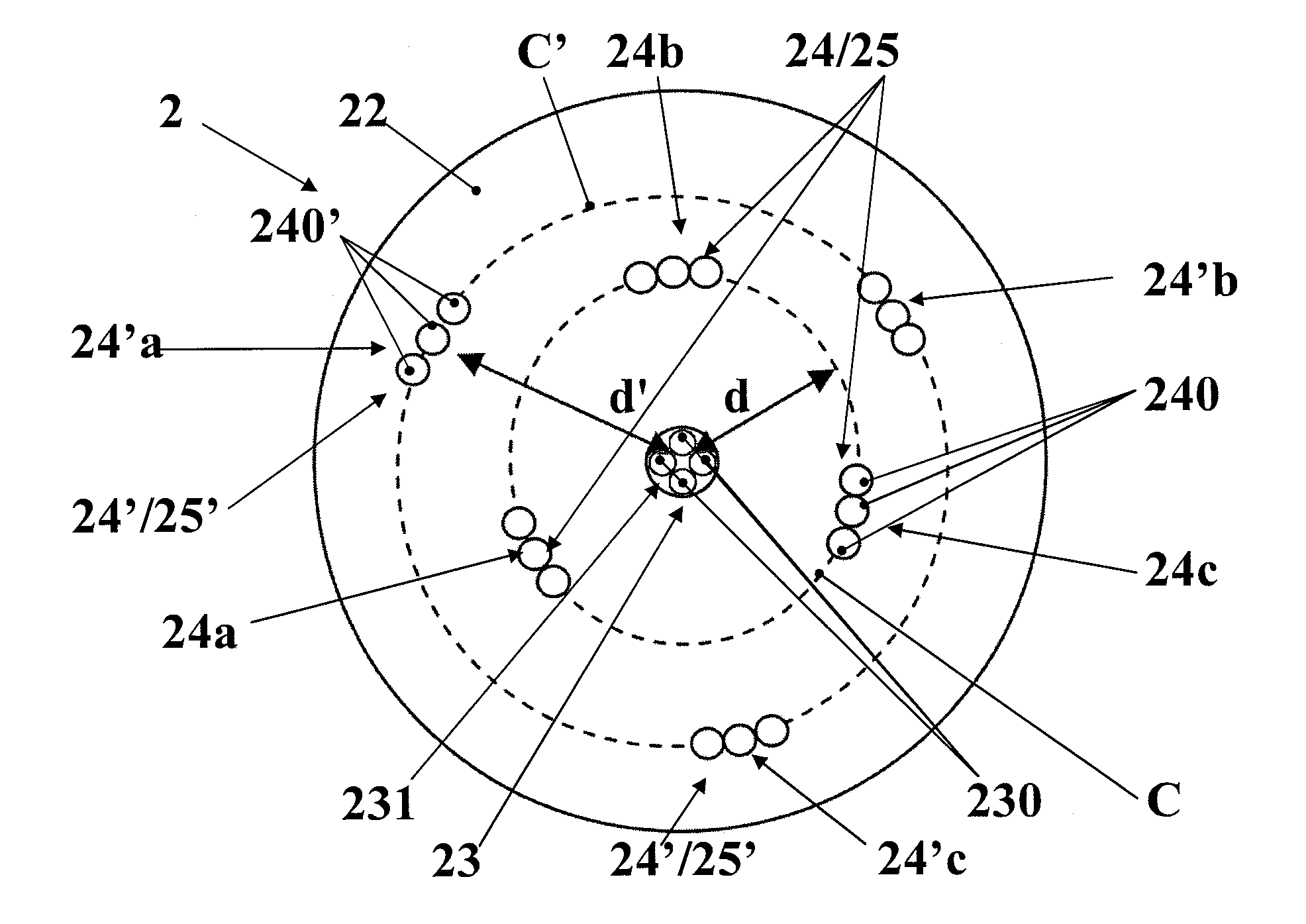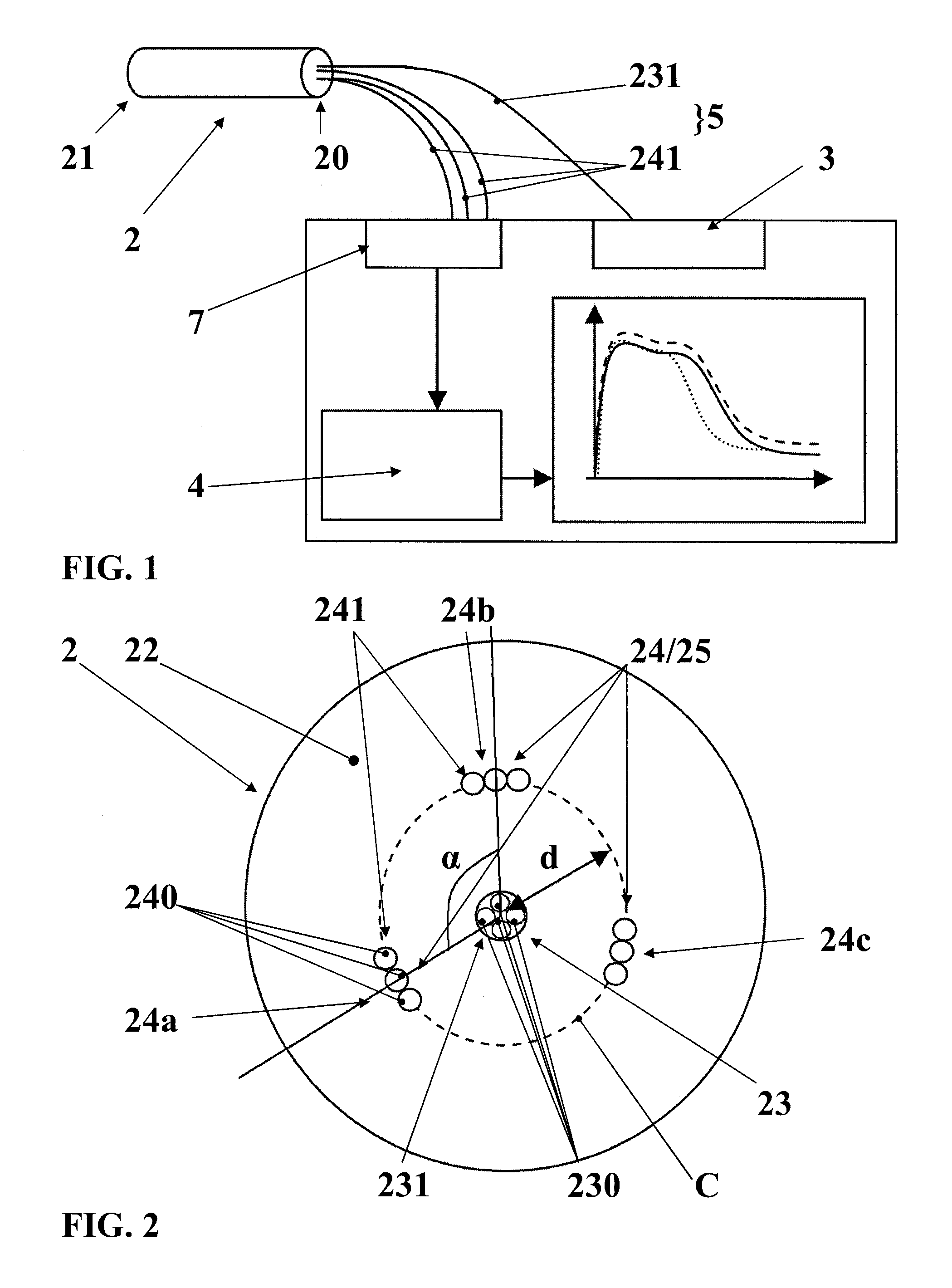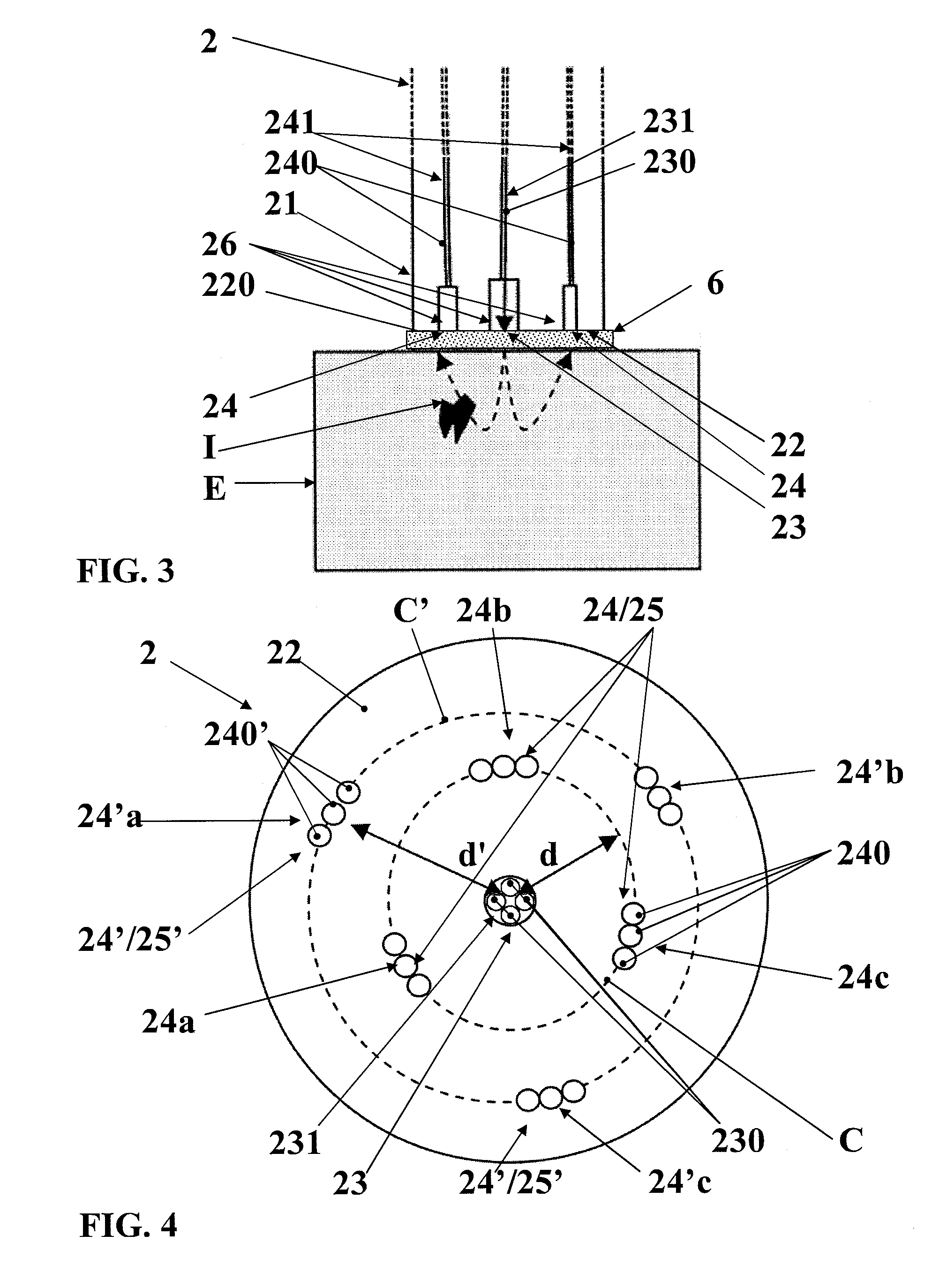Spectroscopic probe and method for detecting an inhomogeneity
a spectroscopic probe and inhomogeneity technology, applied in the field of spectroscopic devices, can solve the problems of inability to obtain comparable spectra, time for acquiring spectra is particularly long, and the time for repositioning the sample is a certain time, so as to achieve the effect of detecting an inhomogeneity and/or lack of uniformity
- Summary
- Abstract
- Description
- Claims
- Application Information
AI Technical Summary
Benefits of technology
Problems solved by technology
Method used
Image
Examples
first embodiment
[0063] not shown, this contact surface 22 extends in a direction forming an angle ranging from 35 to 55° (preferably) 45° with respect to the direction of the axis of the tube.
[0064]However and as can be seen in FIGS. 1 and 3, this contact surface 22 preferably extends substantially perpendicularly to the axis of this tube.
[0065]Another feature of this spectroscopy probe 2 consists in that it includes, firstly, means 23 for illuminating the sample E to be analyzed with an incident light, in this case, the light emitted by the above-mentioned means 3 for emitting monochromatic or polychromatic light (in particular within a range of ultraviolet, visible, infrared, near infrared or also mid infrared wavelengths) and, secondly, means (24; 24′) for collecting light (here too monochromatic or polychromatic light, in particular within a range of ultraviolet, visible, infrared, near infrared or also mid infrared wavelengths) re-emitted by the sample E to be analyzed under the action of the ...
second embodiment
[0095] this means 220 for receiving the re-emitted light is of an at least partly absorbent type and is formed either of a colored material forming at least one portion of this contact surface 22, or of a colored coating that at least one portion of this contact surface 22 includes.
[0096]A particular embodiment consists in that this means 220 for receiving the re-emitted light is of a fully absorbent type and is formed either of a black material (in particular an epoxy resin and graphite) entering into the composition of this contact surface 22, or of a black coating inserted, applied against or (and preferably) deposited on this contact surface 22.
[0097]An additional feature consists in that the probe 2 includes at least one through opening 26 provided for in the wall of this probe 2, in particular in the wall at the level of which the contact surface 22 of the probe 2 is defined.
[0098]In fact, such a through opening 26 ends at the level of this contact surface 22 and is intended t...
third embodiment
[0138]Finally, this method consists in that the presence of an inhomogeneity I in the sample E is determined, this:[0139]by proceeding to a main components analysis;[0140]by using as a statistic criterion the Hotteling distance, the residues or the levers.
[0141]Another feature consists in that this method for detecting, by spectroscopy, an inhomogeneity I in a sample E can advantageously be implemented by an analysis device 1 having the above-described features and / or including at least one spectroscopic probe 2 having the above-described features.
[0142]In particular and as mentioned above, this method consists in that the light re-emitted by the sample E is collected, this at different spots located at the same distance d from the means 23 for illuminating this sample E or their barycenter.
[0143]In fact, for collecting the light re-emitted by the sample E at these different spots of this sample E, it is particularly advantageous to use the spectroscopic probe 2 object of the prese...
PUM
| Property | Measurement | Unit |
|---|---|---|
| angle | aaaaa | aaaaa |
| angle | aaaaa | aaaaa |
| angle | aaaaa | aaaaa |
Abstract
Description
Claims
Application Information
 Login to View More
Login to View More - R&D
- Intellectual Property
- Life Sciences
- Materials
- Tech Scout
- Unparalleled Data Quality
- Higher Quality Content
- 60% Fewer Hallucinations
Browse by: Latest US Patents, China's latest patents, Technical Efficacy Thesaurus, Application Domain, Technology Topic, Popular Technical Reports.
© 2025 PatSnap. All rights reserved.Legal|Privacy policy|Modern Slavery Act Transparency Statement|Sitemap|About US| Contact US: help@patsnap.com



